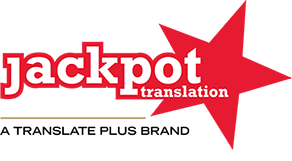
Five steps to better video game translation
Video game translation is no easy task and you only have to look at some of the struggles major brands like Nintendo and Sony experience to get an idea of how big the challenge can be. The fact is, languages are complex and once you throw in the technological and cultural implications of translating a video game, there’s a lot of room for mishap.
Luckily, we know a thing or two about translating games effectively and today we’re going to share with you five key steps that’ll improve the quality of your translations. Not only this, but they’ll help you complete projects faster and waste less of your budget on ineffective workflows.
#1: Start with video game localisation
Video game localisation adapts your game in ways that reach beyond translation – for example, making sure UI elements are large enough to contain text in every language and finding typefaces/fonts that support each language.
Essentially, the role of localisation is to make the video game translation process easier, more cost-effective and achieve the best possible quality.
The key thing is to start the localisation process as early as possible. We’ve already mentioned two key design factors – fonts and UI elements – that can cause translation problems further down the line. Leaving translation until the last moment leaves you vulnerable to these problems and countless others.
These can be expensive problems and localising your game – from the early design stage right through the development process – will save a lot of time, money and other resources.
#2: Hire professional translators
When it comes to the actual translation stage of game development, make sure you go with professionals. By that we mean professional, human translators with the linguistic expertise you need and experience in the translation of video games. Don’t accept machine or fan translations because you’ll never achieve the quality your audience demands and the experience of playing your game in other languages will suffer.
Ideally, you want an experienced team of video game translators that you can use on every project. Working with the same team on a regular basis will speed up your workflow, improve results and cut your overall expenses.
#3: Provide all the context you can
It’s important you provide translators with all the context you can when you hand over your text files. If they see the word “Attack” out of context, your translator will be wondering whether it’s a noun, infinitive or imperative – all of which require different translations in most languages outside English.
This is a basic example but the same thing goes for more complex translations of gameplay dialogue. For example, your translator needs to know if a conversation is an argument or a friendly exchange. You should also highlight any instances of sarcasm, puns or wordplay that need to be considered in the video game translation. You should also provide information about each of the characters whose dialogue needs to be translated – particularly gender, which affects the grammar of many languages.
#4: Use technology to enhance the translation process
It often sounds like human translators are at war with the technology that’s threatening to take their jobs, but this simply isn’t the case. Technology is improving every year and it allows agencies like ourselves to deliver the highest quality of translations in a shorter time frame.
For example, we use translation memories to cut out the repetition of translating your content. By storing each individual translation from across all of your projects, these are saved and automatically inserted into future content where the same wording is used – something that crops up a lot more than you would expect.
We also use technology to speed up the review process and make managing projects more effective, all of which improves quality, speeds up turnaround times and reduces the cost of each project.
#5: Know how much your audience cares about video game translation
Too many game publishers underestimate the importance of translators among gamers in their target markets – don’t make the same mistake. The global gaming community is becoming more demanding about video game translation and localisation and we’ve seen a number of backlashes against major names like Nintendo and Sports Interactive over the past couple of years.
From negative reviews to boycotts and even protests in the streets, misfiring on your translation efforts is the fastest way to isolate one of your target markets. Don’t underestimate how important it is for gamers to feel included. The challenge is creating an accurate experience in other languages that brings the original version of your game to players in other languages with translations that enhance the gameplay rather than get in the way of it.
Quality translation is as much about the process as it is the end result. When time and resources are limited, you need to hit 100% accuracy and the right level of quality as quickly and effectively as possible. So follow the five steps we’ve outlined in this article and get in touch with our team of video game translation experts if you need any help with managing projects more efficiently.
- Posted by Alexandra Kravariti
- On 20th April 2018
- 0 Comments



0 Comments